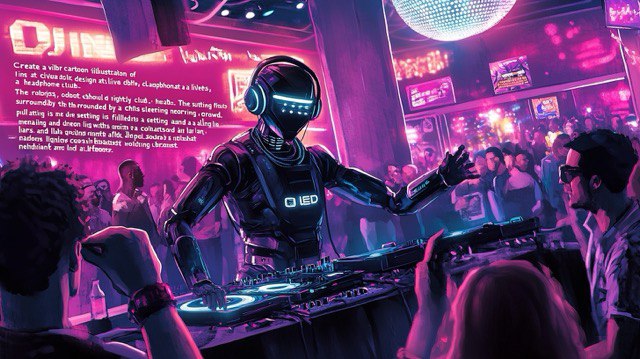
How to Generate a Song
To compose a new track, it’s no longer necessary to be a composer or collaborate with a lyricist. Neural networks help create unique musical compositions in just a few clicks. Of course, there’s no guarantee that an AI-generated song will become a hit, but for specific cases, such as creating a company anthem, a musical greeting, or an advertisement jingle, artificial intelligence can be utilized. How to generate a song using a neural network is the topic of today’s article.
Is It Possible?
Neural networks can rhyme lyrics on a given topic and match the words with music to sync with the rhythm. AI-powered online services can generate tracks in various genres and musical styles. However, it’s important to understand that only humans can currently create true hits. After all, songs consist not just of rhymes and notes. Every musician puts their heart and personal experiences, emotions, and hopes into a musical composition.
No AI algorithm is yet capable of creating a unique hit entirely. However, neural network tools can serve as a source of inspiration, help find the right direction, rhythm, and discover new sounds.
Quick track generation creates unique background compositions for advertisements, videos, and presentations. This way, marketers don’t have to resort to external composers. AI-based soundtracks are used in video games, movie, and TV show intros.
How to Generate
To generate a song using a neural network, start by choosing a platform. There are many AI services offering music generation. Some are free. For example, OpenAI, MuseNet, Google Magenta, etc. Choose the program that suits your needs. We will illustrate how to generate a song using the popular service Suno AI. It utilizes advanced neural network technologies to generate unique musical compositions consisting of a unique melody, specified rhythm, and rhymed lyrics.
How to generate a song in Suno:
- Create an account on the platform.
- Choose the genre and style in which you want to write the song.
- Create a prompt to generate lyrics on a given topic or upload your own written lyrics.
- Set the track length, instruments, tempo, and other elements affecting the composition’s sound.
- Click the generate button.
- Use editing tools to perfect the track to your desired result.
- Save the final musical composition to your computer or cloud storage.
How to generate a music video for the song: Choose a platform capable of visualizing a musical composition. The most popular platforms supporting video creation based on an audio track are Rotor Videos, Lumen5, and Veed.io. Upload the generated track, and the system will prompt you to select the genre, visual elements, and set the pace of picture changes according to the music’s rhythm.
You can customize the color palette, transition intensity, and other parameters. After generation, the service will offer a preview and allow you to make adjustments if needed. For example, you can change individual scenes, effects, or add text. When the video is ready, download it in the required format or publish it on any video hosting site.
Problems and Solutions
Despite all the advantages of automatic track generation and creating music videos using neural networks, users may encounter difficulties working with AI-based platforms. The main problem is that the generated tracks don’t always sound professional. To improve quality, it is recommended to use additional music editors for professional sound processing and adding effects.
Sometimes music generation results in melodies composed of repetitive note sequences. To avoid this, experiment with settings, edit the generated track, and add more personal details. It’s also important to correctly generate song lyrics with the neural network. Sometimes, in seeking rhymes, the logical flow is lost, and the lyrics turn out meaningless. You can change the prompt, edit the lyrics in a text editor, or manually correct them to add more soul.
Another potential issue is publishing the generated musical composition. Pay attention to the platform’s licensing terms. Ensure you have the right to use the created melody for commercial purposes. Also, check the new composition for plagiarism. Otherwise, after publication, the original author may claim copyright infringement.
Conclusion
Generating a song using artificial intelligence opens new creative possibilities. Professional musicians and amateurs can leverage digital technology to find their sound, match melodies to lyrics, write a new track, and create a video clip. Try different platforms, experiment with genres, and add more personal creativity to the song to “bring it to life.”

